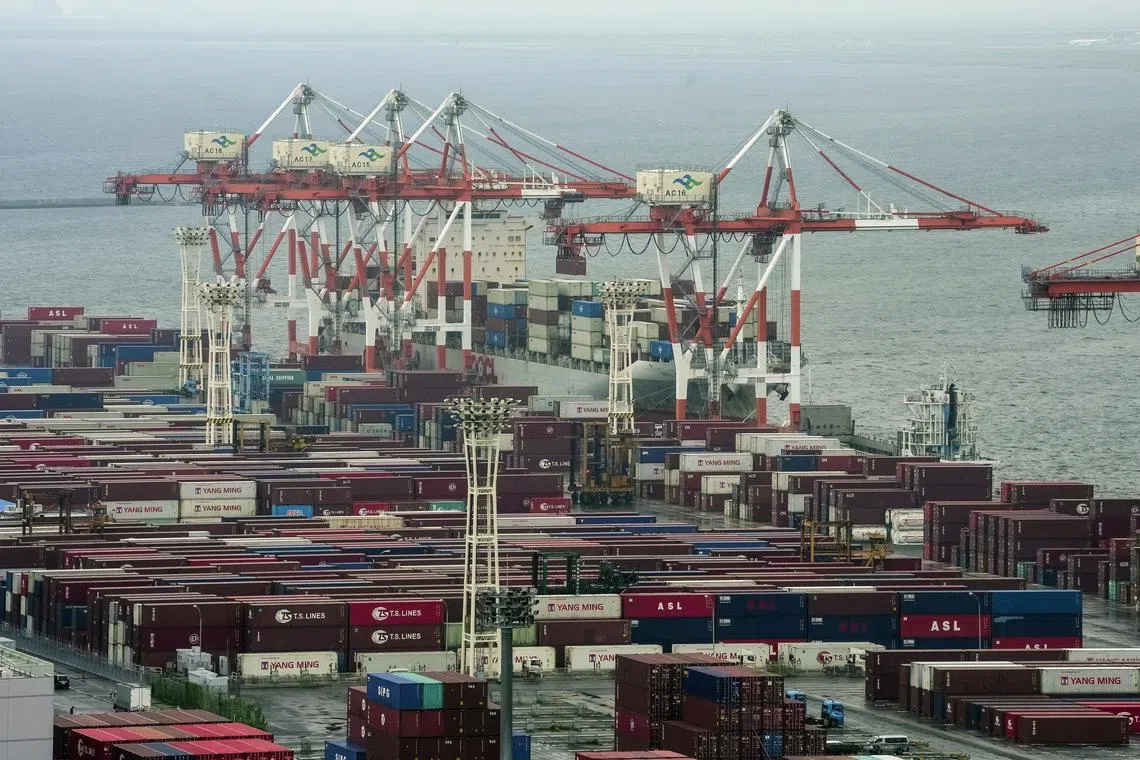Japan exports shrink for first time in more than 2 years
Sign up now: Get ST's newsletters delivered to your inbox

The value of Japan's exports fell 0.3 per cent in July from 2022, retreating for the first time since February 2021
PHOTO: EPA-EFE
Follow topic:
TOKYO – Japan’s exports dropped for the first time in more than two years as patchy overseas demand weakened, signalling headwinds for an economic recovery that has relied increasingly on external markets as domestic spending sputters.
The value of exports fell 0.3 per cent in July from 2022, retreating for the first time since February 2021, as sharp falls in shipments of chipmaking gear and parts outweighed a jump in demand for cars, the Finance Ministry reported on Thursday. Economists had forecast a 0.2 per cent decline.
Imports fell for a fourth month, sliding 13.5 per cent from the previous year, the steepest decline since September 2020 as commodity prices eased. Economists had estimated they would fall by 15.2 per cent.
The trade balance slipped back into the red, with a deficit of 78.7 billion yen (S$732 million) after a 43 billion yen surplus in the previous month. Economists had expected the surplus to widen to 47.9 billion yen.
The figures come days after data showing the economy grew at a 6 per cent annualised pace in the second quarter, with much of that expansion powered by external demand. Combined with signs of sluggish domestic demand – household spending fell for a fourth straight month in June – the data adds to the case for Bank of Japan (BOJ) governor Kazuo Ueda and his board to retain their ultra-easy policy as the authorities wait to see if recent gains in wages become a trend.
Exports data continued to highlight uneven economic conditions overseas. Shipments to the United States rose by 13.5 per cent from a year ago, a slightly faster pace than in the previous month, and those to Europe increased by 12.4 per cent. Meanwhile, exports to China, Japan’s biggest trading partner, slid by 13.4 per cent, the largest drop since January, with shipments of cars and chips and chip components dipping at double-digit clips.
Shipments to China fell for an eighth consecutive month, a trend that may persist as economic activity cools. The world’s second-largest economy saw slower-than-expected growth in the second quarter, prompting economists to slash their forecasts for 2023 growth.
Exports to the US were powered by shipments of cars, which rose 34 per cent as supply chain glitches were ironed out. Japan also shipped more cars to Europe.
It is unclear if that demand will be sustained. Leading economic indicators in the US and Europe have shown signs of slowing, partly due to continued interest rate hikes.
“The automobile industry has been recovering, but this trend will soon run its course,” said senior research associate Makoto Ishikawa at Itochu Research Institute, adding that once it runs its course, Japan’s exports to Europe and the US will weaken.
In its latest outlook report, the BOJ noted that external demand may flag in the months ahead.
“Exports and production are projected to be affected by the slowdown in the pace of recovery in overseas economies,” it said.
The deterioration in the trade balance comes even as inbound tourism helps bring money into the country. The number of foreign visitors to Japan topped two million for a second consecutive month in July, recovering to about 7 per cent of pre-pandemic levels.
This effect could build in the coming months after China last week ended a ban on group tours to Japan. The Daiwa Institute of Research estimates that Chinese tour groups will boost inbound spending by about 200 billion yen to roughly 4.1 trillion yen in 2023.
The weak yen is fuelling the strong interest among tourists in visiting Japan. It should also help boost the profits of exporters, but it also puts upward pressure on import bills. BLOOMBERG

